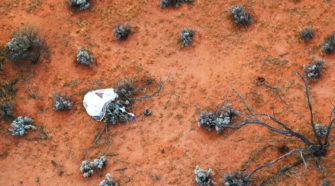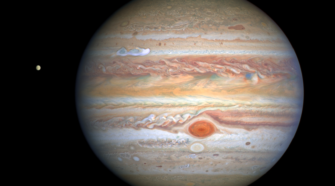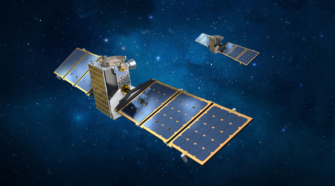Solar System
Japan’s Hayabusa2 brings back dust and rock samples from asteroid
Japanese space scientists are positively gleeful as they have now confirmed that their ambitious Hayabusa2 spacecraft successfully collected over 5 grams of pristine black as coal soil and rock samples gathered from the ancient near-earth asteroid Ryugu in a re-entry capsule that parachuted safely to Earth earlier this month after a six-year roundtrip scientific journey …
Total solar eclipses reveal the dark and stormy side of the Sun we never see
In astronomy, we have a common saying: “good luck, and clear skies”. For an eclipse chaser like me, this is especially important. We have two minutes and no second chance – one small cloud can spoil everything. Thousands of tourists turn up to see them, along with a few dozen scientists, for which the eclipse …
OSIRIS-REx attempting to bring back rock and dust samples from asteroid Bennu
Imagine parallel parking a 15-passenger van into just two to three parking spaces surrounded by two-story boulders. On Oct. 20, a University of Arizona-led NASA mission 16 years in the making will attempt the astronomical equivalent more than 200 million miles away. A NASA mission called OSIRIS-REx will soon attempt to touch the surface of …
Hubble captures new storm barreling across Jupiter
A spectacular new image of Jupiter was taken last month by NASA’s iconic Hubble Space Telescope (HST), which celebrated its 30th year of operation during 2020. The image unveils never-before-seen detail, including a newly formed giant white-colored turbulent storm swirling at over 300 mph in the northern latitudes as our solar system’s largest planet was …
Detection of phosphine in Venus’ clouds is a big deal as it may be a sign of life
On Sept. 14, 2020, a new planet was added to the list of potentially habitable worlds in the Solar System: Venus. Phosphine, a toxic gas made up of one phosphorus and three hydrogen atoms (PH₃), commonly produced by organic life forms but otherwise difficult to make on rocky planets, was discovered in the middle layer …
Twin spacecraft to study “rubble pile” binary asteroids
The official go-ahead has been given by NASA to a mission to launch a pair of small spacecraft to capture the first-ever closeup look at a mysterious class of solar system objects: binary asteroids. These bodies are pairs of asteroids that orbit around each other in space, much like the Earth and Moon. In a project …






